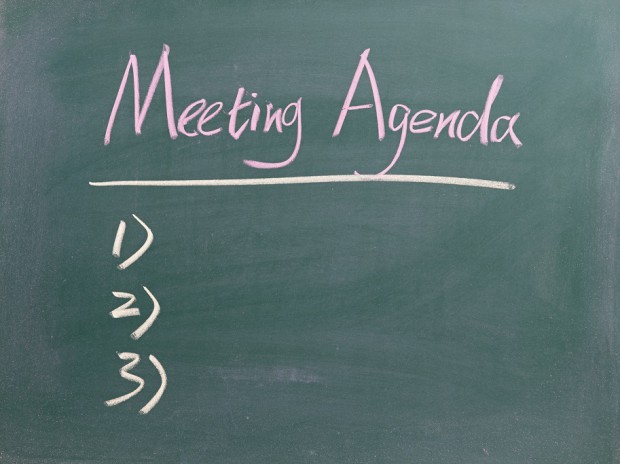What’s on the agenda? 7 steps towards an organised meeting
Make sure your meeting goes as smoothly as possible with a perfectly planned agenda…
A poorly planned meeting is not just a missed opportunity – it can be a waste of time and money.

Make sure you’re not taking away valuable hours from your staff by creating the perfect meeting agenda.
1. Plan in advance
For big meetings, you’ve got to know what’s on the agenda at least 3 days beforehand but ideally, you’ll have your agenda prepped before you send out the invites.
Invites should include a brief rundown of what’s coming up along with a variety of other information from location to time.
2. Ask for feedback
It might be your meeting but that doesn’t mean you can’t cover topics that are important to other people. Before you send an invite, send an email asking people if there’s anything they want to bring up.
This way, you can see if there are any recurring topics that should be covered and you won’t get any surprises during the actual meeting, allowing you to plan the timetable better.
3. Set time limits
For an efficient meeting, you need to give each topic an allotted amount of time. You also need to stick to these limits as much as possible.
Set an alarm on your phone for each topic – this not only lets you keep time but is also a signal to the group that it’s time to move on. If anyone feels they haven’t covered the topic fully, agree to meet with them one-to-one after.

4. Provide some wiggle room
Not everything needs to be planned to the last second. You’ll need some wiggle room – preferably at least 10 minutes at the start and another 10 at the end.
This gives attendees a bit of time to gossip and time at the end to organise the next meeting or cover topics that might have overrun.
5. Cover the basics
Sending an invite with just the time is a big no-no – especially for companies with a number of meeting rooms.
Lay out in the email when and where it is, what the main points you hope to cover are and any contact details. Also, let them know that if they agree to attend they should turn up – this isn’t a Facebook event.
6. Let people know what they should bring
Will they just be taking notes or following a presentation, or will they be asked to show their own research?
If they need to bring laptops they need to know in advance. It’s also polite to let them know if anyone will be video conferencing in or whether the boss or any chair-people will be attending so they can dress accordingly.
7. Start planning for next time
At the end of this meeting is when you start planning the agenda for the next one. Use the opportunity of having everyone in one room to sort out the next meeting.
Ask around for any topics that weren’t covered and add those to the list for the next meet up.
Posted by Ashleigh Sharp
Share this post
Tags
- Career Development
- Celebrity Meetings
- Conferences
- Confidence
- Exhibitions
- Historic Meetings
- How to Interview Effectively
- Human Resources
- In The Press
- Meetings and Conferences
- Monarchy
- News
- Our Team
- Personal Development
- Personnel
- Presentation Techniques
- Teamwork
- Top Tips for Meetings
- Training & Workshops
- Video Conferences



